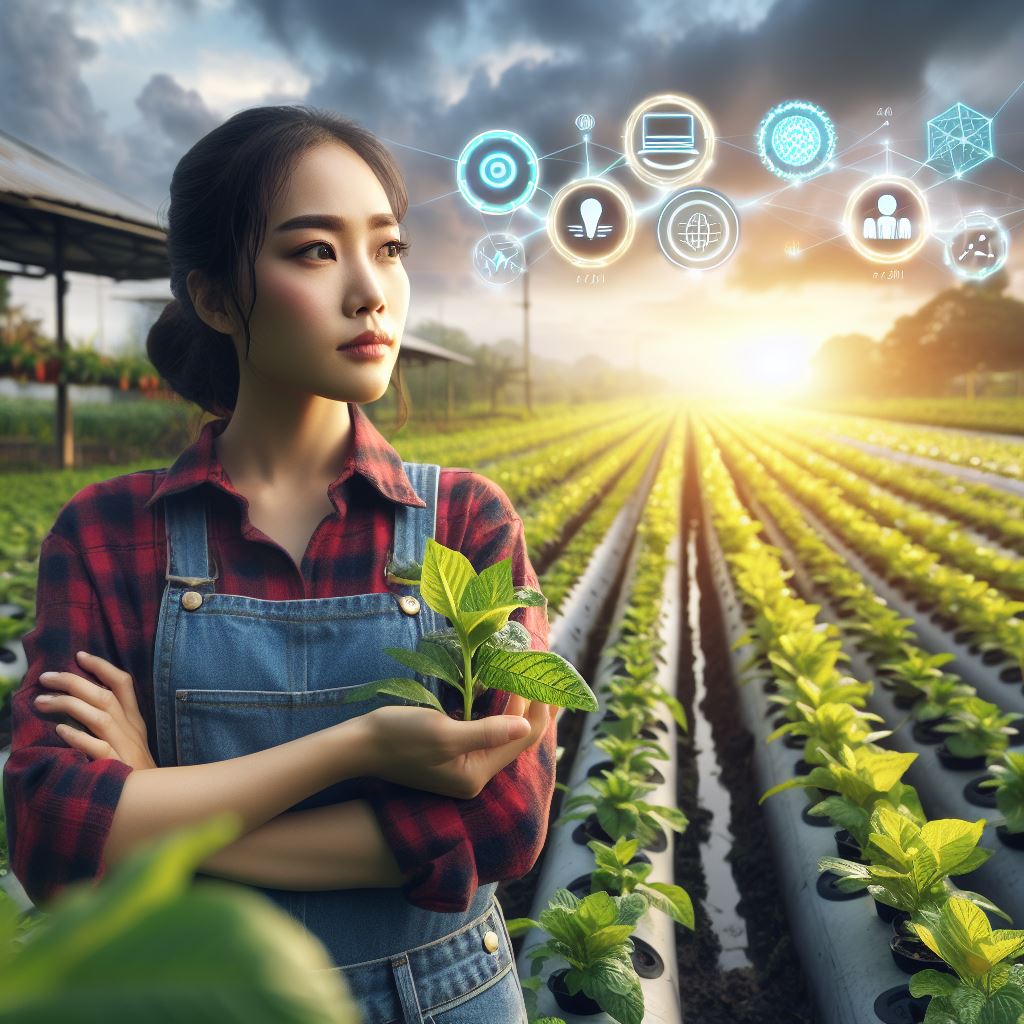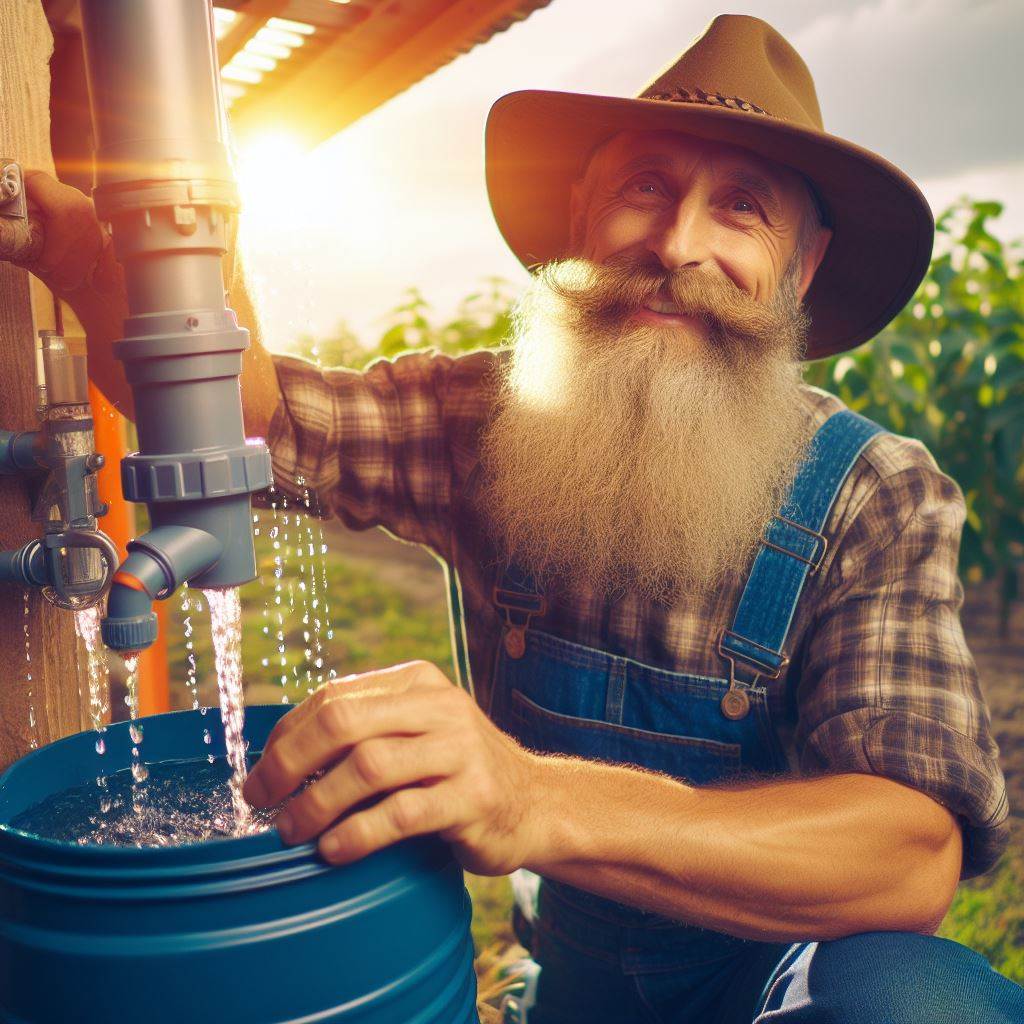Introduction
A. Definition and brief explanation
Vertical farming is a revolutionary concept that seeks to address the challenges of climate change.
It involves cultivating crops in vertically stacked layers, utilizing indoor environments.
This method aims to maximize productivity and minimize the use of resources such as water and land.
By growing crops in controlled environments, vertical farming can reduce the reliance on fossil fuels and harmful pesticides.
B. The importance of finding climate solutions cannot be overstated
Climate change threatens the very existence of our planet, causing extreme weather events, rising sea levels, and loss of biodiversity.
We need innovative methods like vertical farming to mitigate these effects.
Vertical farming offers numerous advantages.
Firstly, it allows us to grow food in urban areas, reducing the need for long-distance transportation and minimizing carbon emissions.
Additionally, it reduces the impact of climate change on traditional agriculture, which relies heavily on weather conditions.
Moreover, vertical farming is not limited by seasonal changes, allowing year-round production of crops.
This ensures a steady food supply and reduces the vulnerability of communities to food shortages.
In fact, vertical farming is an innovative approach that offers a climate solution by maximizing resource efficiency and minimizing environmental impact.
Its importance cannot be emphasized enough as we strive to find sustainable solutions to mitigate climate change.
By adopting vertical farming, we can address the challenges of food security, resource scarcity, and environmental degradation.
Benefits of Vertical Farming as a Climate Solution
Vertical farming, as a climate solution, offers numerous benefits that address various environmental challenges.
By harnessing innovative techniques, this sustainable farming method presents a promising solution for future food production.
A. Resource efficient
One significant advantage of vertical farming is its resource efficiency.
Traditional agriculture requires vast expanses of land, but vertical farms utilize limited space, making them suitable for urban areas where land supply is limited.
The vertical design allows for multiple stacked layers of crops, significantly increasing the yield per square meter of land.
This efficiency enables farmers to produce more food using fewer resources, reducing land exploitation and habitat destruction.
Water scarcity is a growing concern globally, and vertical farming offers a solution to this issue.
By employing controlled irrigation systems, water usage is significantly reduced compared to conventional farming methods.
Water is supplied directly to the plants, using only the necessary amount, minimizing waste.
Additionally, the use of advanced technologies, such as hydroponics and aeroponics, further enhances water efficiency.
Vertical farming’s water-saving capabilities contribute to the conservation of this valuable resource, helping to alleviate water stress in water-scarce regions.
B. Reduced carbon footprint
Moreover, vertical farming helps reduce the carbon footprint associated with food production.
Since vertical farms can be located in urban areas or even within buildings, the transportation distance from farm to consumer is greatly reduced.
This mitigates the emissions generated by long-haul transportation, positively impacting air quality and reducing greenhouse gas emissions.
Additionally, vertical farming eliminates the need for pesticides and herbicides, which are commonly used in conventional agriculture.
By adopting integrated pest management techniques and other sustainable approaches, vertical farms minimize chemical pollution, benefiting both the environment and human health.
C. Climate-independent
Vertical farming also offers climate independence, making it less vulnerable to the effects of weather conditions and natural disasters.
Traditional farming is highly dependent on favorable weather conditions, making it susceptible to droughts, floods, storms, and other unpredictable events.
In contrast, vertical farms provide a controlled environment, allowing farmers to regulate temperature, humidity, and light intensity.
These controlled conditions enable year-round production, reducing the risk of crop losses and ensuring a more stable food supply.
Additionally, vertical farming can be implemented in regions with harsh climates or limited arable land, providing opportunities for food production even in challenging environments.
In short, vertical farming proves to be a valuable climate solution with numerous benefits.
Its resource efficiency, reduced carbon footprint, and climate independence make it an attractive option for sustainable food production.
By utilizing limited land space, conserving water, minimizing chemical pollution, and providing a stable food supply, vertical farming addresses various environmental challenges.
As the world faces increasing population growth and environmental concerns, vertical farming presents a viable and promising solution for ensuring food security and mitigating climate change impacts.
Read: Adapting Farming to Climate Shifts
Techniques and Technologies Used in Vertical Farming
In vertical farming, several techniques and technologies are utilized to maximize efficiency and productivity.
A. Utilization of height
Vertical farming takes advantage of the available vertical space, making use of techniques such as vertical stacking and tiered systems.
This allows farmers to create multiple levels of cultivation, effectively maximizing the growth area and increasing crop yield.
Transform Your Agribusiness
Unlock your farm's potential with expert advice tailored to your needs. Get actionable steps that drive real results.
Get StartedB. Controlled environment agriculture
Controlled environment agriculture is another crucial aspect of vertical farming.
Since sunlight may be limited in indoor setups, artificial lighting is utilized to provide plants with the necessary light energy for photosynthesis.
Additionally, temperature, humidity, and CO2 levels are carefully regulated to create an optimal environment for plant growth.
C. Hydroponics and aeroponics
Soilless cultivation techniques play a significant role in vertical farming.
Hydroponics, for example, involves growing plants in nutrient-rich water solutions, while aeroponics involves misting the plant roots with nutrient solutions in a controlled environment.
These techniques allow plants to receive the necessary nutrients directly, maximizing efficiency and reducing the need for soil.
Efficient nutrient delivery systems are implemented to ensure that plants receive the right amount of nutrients for optimal growth.
D. Integration of automation and robotics
Automation and robotics are integrated into vertical farming to streamline operations and increase efficiency.
Sensors and artificial intelligence play a crucial role in monitoring and regulating growth factors such as light, temperature, humidity, and nutrient levels.
This allows farmers to maintain an optimal environment for plant growth.
Additionally, robots are employed for tasks such as harvesting and maintenance.
They can navigate the vertical farming setups, identify ripe crops, and perform precise harvesting operations, reducing manual labor and increasing productivity.
In a nutshell, vertical farming relies on various techniques and technologies to optimize space utilization and create an optimal growing environment.
The use of vertical stacking, controlled environment agriculture, soilless cultivation techniques, and automation with robotics all contribute to increased productivity and efficiency in vertical farming.
Read: Smart Watering: Tech Solutions in Farming

Success Stories and Case Studies
A. Gotham Greens in New York City
One of the most successful stories in the world of vertical farming is Gotham Greens in New York City.
What sets Gotham Greens apart is their largest rooftop greenhouse, which spans over 15,000 square feet.
By utilizing the rooftop space, Gotham Greens maximizes their growing area and reduces their environmental footprint.
This innovative approach allows them to grow fresh produce right in the heart of the city, minimizing transportation and energy costs.
Gotham Greens has been a pioneer in sustainable urban agriculture, implementing various techniques to achieve their goals.
They use hydroponic systems, which require 90% less water compared to traditional farming methods.
This ensures efficient water usage and helps conserve this vital resource.
In addition, Gotham Greens uses renewable energy sources, such as solar power, to operate their greenhouse.
By reducing their reliance on fossil fuels, they contribute to the fight against climate change.
These sustainable practices have led to achievements like reducing carbon emissions by 1,000 tons annually.
B. AeroFarms in Newark, New Jersey
AeroFarms is another notable success story in the realm of vertical farming, located in Newark, New Jersey.
They have revolutionized the way crops are grown by using advanced technology and innovative vertical farming practices.
AeroFarms grows their plants in a completely controlled environment, providing optimal conditions for growth.
This precision agriculture approach allows them to achieve higher crop yields compared to traditional farming methods.
By growing plants vertically, AeroFarms can stack multiple layers of crops, maximizing their growing area.
They have also developed a proprietary aeroponic system that uses mist and nutrients to nourish the plants.
This system eliminates the need for soil, further reducing resource consumption and potential contamination.
In addition to saving water, AeroFarms also reduces pesticide use, as their closed environment minimizes pest intrusion.
Showcase Your Farming Business
Publish your professional farming services profile on our blog for a one-time fee of $200 and reach a dedicated audience of farmers and agribusiness owners.
Publish Your ProfileThese practices not only improve the sustainability of crop production but also ensure the safety and quality of their produce.
C. Sky Greens in Singapore
Sky Greens in Singapore showcases the potential of vertical farming in limited space city-states.
Singapore faces significant challenges in terms of food security due to its limited land resources.
Sky Greens provides a solution by utilizing skyscrapers to grow crops in vertical structures called “A-frames”.
These A-frames rotate slowly, ensuring that all plants receive an equal amount of sunlight for optimal growth.
This innovative design allows Sky Greens to produce crops efficiently within a small footprint.
In addition to addressing food security challenges, Sky Greens contributes to local food production and reduces reliance on imports.
Their produce is grown without pesticides or herbicides, contributing to a healthier environment and safer food options.
The success of Sky Greens shows that vertical farming can be a viable solution for densely populated urban areas.
These success stories and case studies demonstrate the immense potential of vertical farming as a climate solution.
By adopting sustainable practices and utilizing innovative technologies, vertical farms can address food security, reduce resource consumption, and combat climate change.
Gotham Greens, AeroFarms, and Sky Greens are leading the way towards a more sustainable and resilient agricultural system.
As vertical farming continues to evolve and expand, more success stories are expected to emerge, shaping the future of food production.
With the urgent need to mitigate climate change and ensure global food security, vertical farming offers a promising path forward.
Read: Water-Saving Tips for Farmers in Drought
Challenges and Potential Limitations of Vertical Farming
Vertical farming has gained significant attention as a potential solution to climate change and food security.
However, there are several challenges and potential limitations that need to be addressed:
A. High initial investment costs
- Vertical farming requires substantial investment in infrastructure and technology. The cost of setting up vertical farms can be prohibitive for small-scale farmers.
- The expenses associated with the installation and maintenance of artificial lighting and climate control systems can be significant.
- These high initial costs may create barriers to entry for small-scale farmers, limiting their ability to adopt vertical farming methods.
B. Energy consumption
- Vertical farms rely heavily on artificial lighting to provide the necessary light spectrum for plant growth. This constant need for lighting increases energy consumption.
- Climate control systems, such as heating and cooling, also contribute to high energy consumption in vertical farms.
- The increased energy usage can have an impact on the overall sustainability of vertical farming and may contribute to a larger carbon footprint.
C. Water usage and recycling
- Vertical farms require a significant amount of water for irrigation purposes. This increased demand for water can strain already limited water resources.
- Strategies for water conservation and recycling need to be implemented to minimize the environmental impact of vertical farming.
- Techniques like hydroponics and aquaponics can help optimize water usage and reduce waste in vertical farming systems.
While these challenges and potential limitations exist, efforts are underway to address them:
- Innovations in technology and infrastructure are driving down the initial investment costs of vertical farming, making it more accessible to small-scale farmers.
- Research is being conducted to develop more energy-efficient lighting systems and climate control solutions for vertical farms.
- Water management techniques, such as capturing and reusing irrigation runoff and optimizing irrigation schedules, are being implemented to reduce water usage in vertical farming.
In general, vertical farming has the potential to revolutionize agriculture and mitigate the impact of climate change.
However, challenges related to high initial investment costs, energy consumption, and water usage need to be overcome to ensure its long-term viability and sustainability.
Continued research and innovation will play a crucial role in addressing these challenges and maximizing the benefits of vertical farming.
Read: Climate Change: Adapting Farm Practices
Conclusion
Vertical farming has numerous benefits as a climate solution.
By utilizing unused urban spaces, it reduces the need for deforestation and preserves natural habitats.
Additionally, it significantly reduces water consumption and decreases the use of harmful pesticides.
Moreover, vertical farming minimizes transportation emissions and ensures fresh produce is available locally.
Furthermore, vertical farming encourages further research and development in agriculture.
It presents an opportunity to explore new technologies, innovative growing methods, and sustainable practices.
By continually improving and expanding vertical farming techniques, we can address food scarcity and environmental concerns simultaneously.
Finally, the potential of vertical farming to revolutionize agriculture and combat climate change is immense.
As the global population continues to grow, traditional farming methods may struggle to keep up with the demand.
Vertical farming offers a viable solution that maximizes space, reduces resource consumption, and minimizes the impact on the environment.
Embracing vertical farming on a larger scale has the capacity to transform the way we produce food.
It offers the potential to create sustainable and resilient agricultural systems, capable of withstanding the challenges posed by climate change.
By investing in the development of vertical farming, we can build a future where agriculture and environmental conservation go hand in hand.




